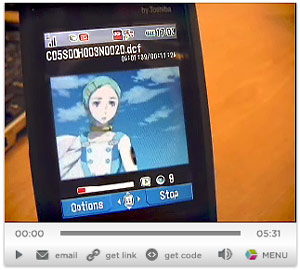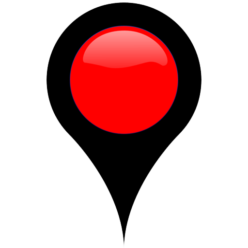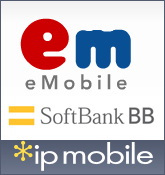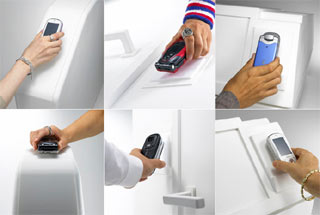3G Network Limitations Define Mobile TV
 It’s rare for WWJ editors, a jaded bunch, to get too excited about new service announcements, but on 6 December, we jumped on this fresh Vodafone press release that seemed to herald the emergence of the rather cool, made-in-Japan ‘Vodafone Live! BB’ (BB= broadband) music- and video-download service into the Group’s European markets. Vodafone live! BB uses the ‘i-Pod model’ to get large media files onto mobile phones, avoiding network traffic fees and should be, we have always thought, a no-brainer for export to Vodafone Opcos outside Japan. Don’t mobilers everywhere want to save on packet/data fees and get audio and DVD-quality video onto their handsets?
It’s rare for WWJ editors, a jaded bunch, to get too excited about new service announcements, but on 6 December, we jumped on this fresh Vodafone press release that seemed to herald the emergence of the rather cool, made-in-Japan ‘Vodafone Live! BB’ (BB= broadband) music- and video-download service into the Group’s European markets. Vodafone live! BB uses the ‘i-Pod model’ to get large media files onto mobile phones, avoiding network traffic fees and should be, we have always thought, a no-brainer for export to Vodafone Opcos outside Japan. Don’t mobilers everywhere want to save on packet/data fees and get audio and DVD-quality video onto their handsets?


 Back in 1999, when I was editing Computing Japan magazine, we ran an article entitled “
Back in 1999, when I was editing Computing Japan magazine, we ran an article entitled “ According to the ancient Chinese calendar, 2006 is The Year of the Dog. More importantly, it’s shaping up to be The Year of the eWallet. Launched last summer, DoCoMo’s FeliCa-based wallet phones are a growing success and competitors Vodafone and KDDI have scrambled to launch their own FeliCa-equipped models.
According to the ancient Chinese calendar, 2006 is The Year of the Dog. More importantly, it’s shaping up to be The Year of the eWallet. Launched last summer, DoCoMo’s FeliCa-based wallet phones are a growing success and competitors Vodafone and KDDI have scrambled to launch their own FeliCa-equipped models.